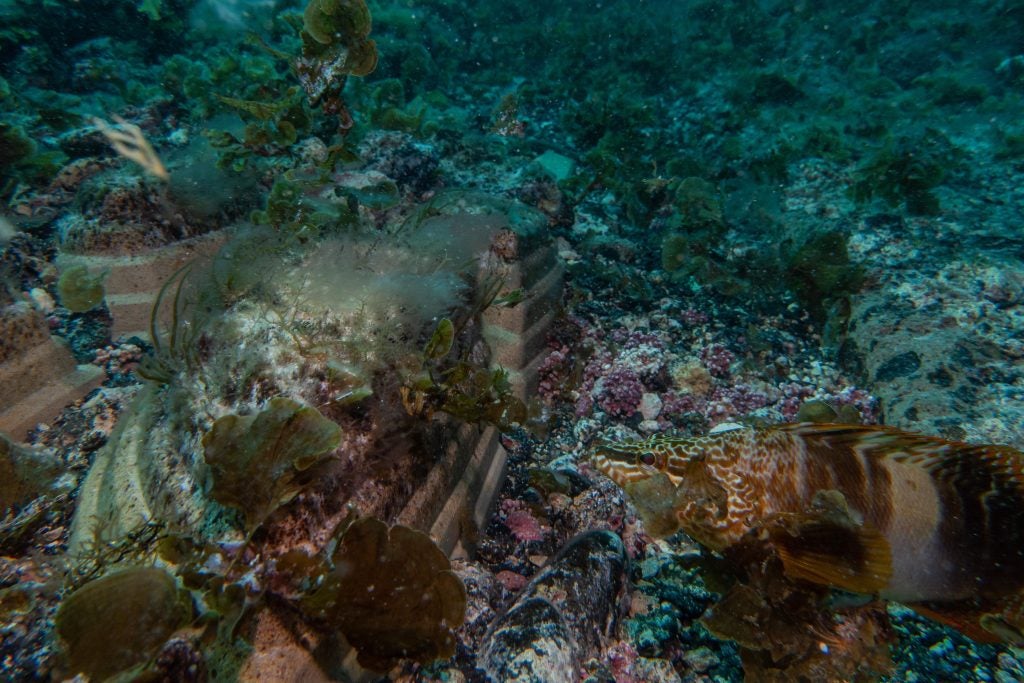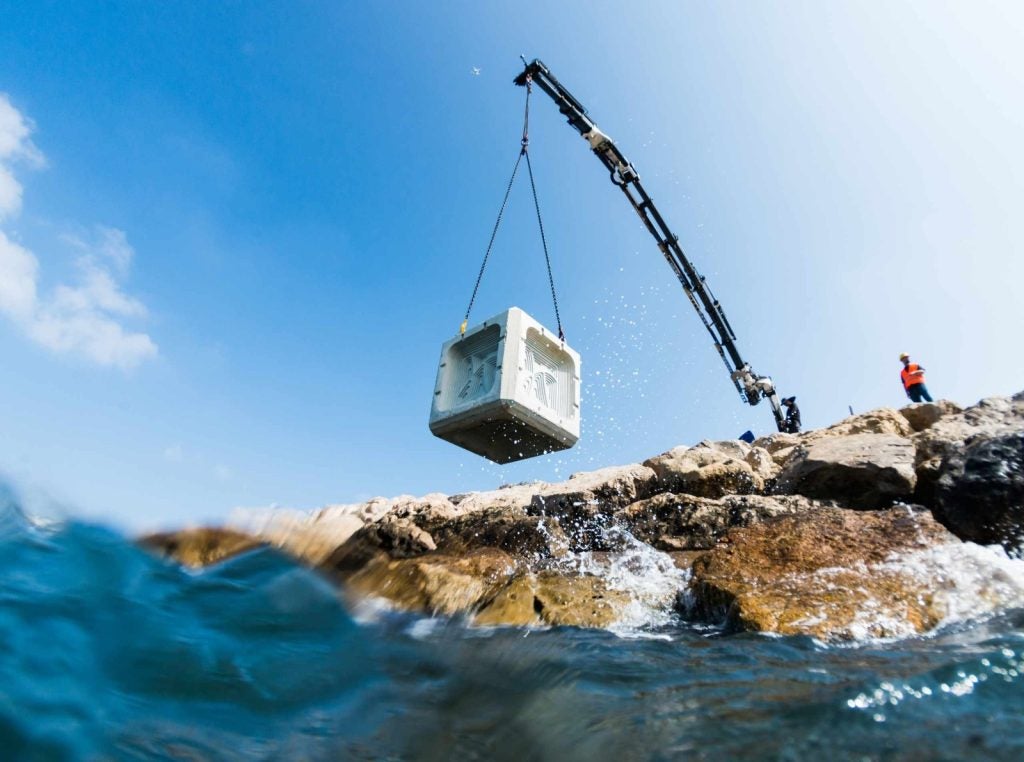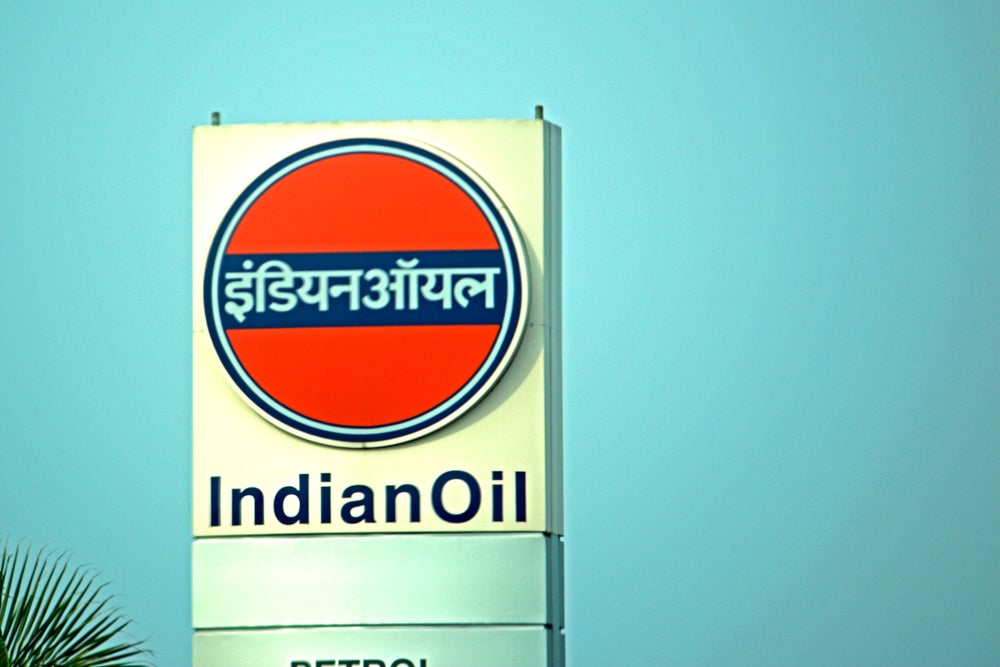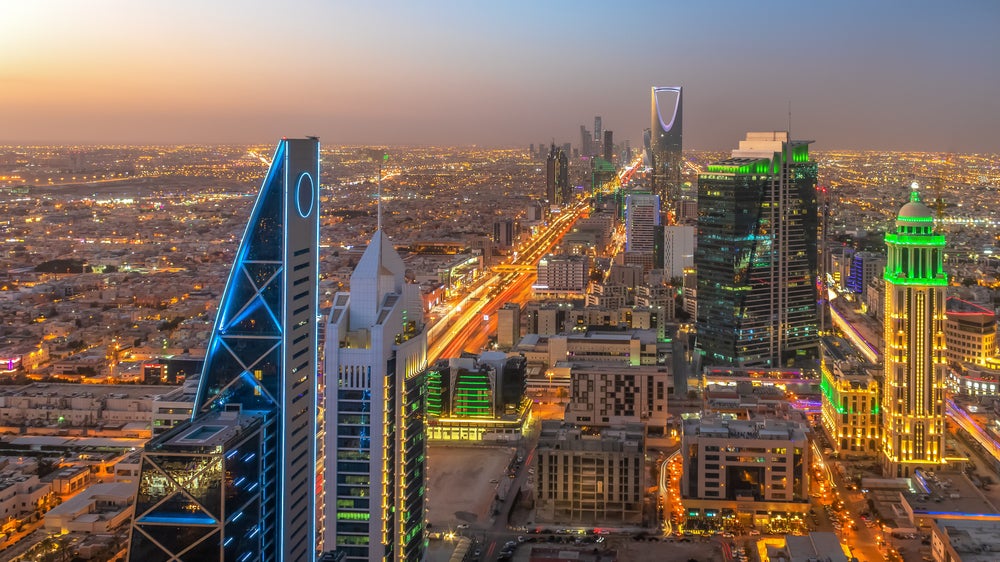Approximately 70% of marine infrastructure globally relies on concrete, however its components are consistently linked with marine biome degradation.
Marine infrastructure company ECOncrete aims to change how marine installations affect the environment. The company has a number of technologies aimed at preserving marine biodiversity, offering an additive to traditional concrete mixes that can alter its chemical composition for the better. This mix allows for greater biodiversity development around concrete structures, by aiding the attachment and growth of oysters, corals and barnacles onto the concrete itself.
The company also produces concrete texture agents and moulds aimed at enabling better growth of marine life on concrete. Not only does this reduce the impact of new concrete infrastructure on local biomes, it also claims to increase the durability of new subsea concrete installations.
Established in 2012, ECOncrete is used in 40 projects across 13 countries, located on nine different seas. Among these is the concrete protection for subsea cables linking the islands of Fuerteventura and Lanzarote in Spain’s Canary Islands. The company provided a tailor-made package to integrate the environment into the subsea cable protection. One year after installation, marine life flourishes around the cable.

Dr Ido Sella is a marine biologist and the CEO and co-founder of the company. Here, Sella explains how ECOncrete’s proprietary technology can aid biodiversity and combat the negative environmental effects of traditional offshore installations, how marine biomes are affected by traditional concrete infrastructure and what is stopping the greater uptake of ECOncrete.
Alex Donaldson: What are the primary applications of ECOncrete?
Ido Sella: All of our projects are infrastructure [based], we don't deal with artificial reefs; we deal with full-scale infrastructure that fully complies with industry standards for offshore construction and coastal construction. The technology is incorporated in during the casting of the infrastructure, whether it's break borders, sea walls, mooring systems, underwater cable protection, or something else.
The technology package is based on a few materials that are added into local concrete, so everything is kept local, using local material, local labour, etcetera. With these, we control the chemical composition of the concrete in such a way that it will not harm biology and the growth of biology, which is very common in concrete infrastructure.
Offshore projects are around 60% of our [project] pipeline. For the offshore industry, we’re mainly providing solutions for the bases of wind turbines, and armouring protection for underwater gas pipes and cables. Our projects include the trans-Adriatic pipeline crosses from Albania to Italy.
Alex Donaldson: ECOncrete operates in nine different oceans. What variances are there in the subsea habitats across these and does the product function equally well across all of these?
Ido Sella: It is effective the same way in tropical environments and in temperate environments. We have projects in Canada, in Seattle, we have projects now that are in an area where we deal with freeze and thaw on the northeast of the of the US, and we have a project in Abu Dhabi and project in the Bahamas. The biological composition of the community will be different, but the processes that we deal with is the same.
Alex Donaldson: How does traditional concrete contribute to the degradation of biomes and how does your product combat this offshore?
Ido Sella: Standard concrete infrastructure is usually associated with poor biological performance, which means low biodiversity as only a few species can grow on the concrete and invasive species dominate. There are less filter feeders, thus affecting the nearby water quality.
We aim to increase biodiversity on concrete. We are not putting some magic powder that attracts the biology, we tackle the chemical composition that leaches out over time.
By doing this, we neutralize the substrate. By neutralizing it, we're allowing those local leachers to settle on the concrete, similar to the way that they are settling on limestone and steel.
Think about the tropical environment, with corals that spawn into the water, then you have coral larvae called planulae. These have a process of sensing the substrate, which is important because they are sessile organisms: once they connect themselves to the substrate, that’s it. This is what we do to increase the amount of larvae that settle on the concrete. Then, later on, the second and third phases of our technology make sure that [the sessile organisms] survive and thrive and grow all the time.
Alex Donaldson: What potential does ECOncrete have for carbon capture and storage (CCS) applications?
Ido Sella: You can increase carbon sequestration when you promote biology. One of the most efficient processes for carbon sequestration is the creation of calcium carbonate [using ambient carbon compounds]. When an oyster creates its shell, it takes ions of calcium and dissolved CO₂ to create calcium carbonate in the shell itself.
By promoting the growth of those organisms on the concrete you naturally increase the capacity of the concrete in terms of carbon sequestration. Biodiversity is our main goal, but this can be an additional benefit. You will not get to the level of technologies that are focusing on capturing CO₂ and carbon, but what you provide is the capacity for infrastructure that is designed to last 100-120 years to have carbon sequestration on a yearly basis on its external surfaces.
For example, a port sea wall can generate the same amount of carbon sequestrations as 100 adult trees each year. It’s still serving the same way, by bringing biology in you increase its ability to provide carbon sequestration up to seven times more than standard concrete.
Alex Donaldson: Have you been finding any barriers to greater use of ECOncrete across marine infrastructure projects around the world?
Ido Sella: If you look at the map, and you see where we are, it's Europe and the North Sea, the US and Australia, New Zealand, Hong Kong, Singapore. We're not in Latin America enough and we’re not in Africa.
There are a few factors that tilt this equation, and it's when projects are funded by entities that dictate the use of either sustainable development or environmental solutions. For example, when American banks are financing large infrastructure projects in the Dominican Republic, or the World Bank is financing large projects in Africa, they’re in a way forcing those entities to look for a solution by mentioning [sustainable development goals] and the need to comply.
This is our market and I hope there is more environmental awareness but, in a way, like any technology, the cost of construction with our technology is higher than otherwise. In order to have a willingness to pay, you need a framework that will make it beneficial to our clients to look for solutions.
Now it's time to start to think about how you bridge development sustainability. How do you build in a more responsible way? And it's the responsibility of the regulators to put those requirements on the industry. Believe me, when the requirements are there, the financial incentives are there, and the Equinor and Ørsted and Iberdrola find a way to cope with those requirements, and they will look for technology that will allow them to cope.
Alex Donaldson: Are there potential other applications for ECOncrete?
Ido Sella: We’re scanning all the time. Firstly, [ECOncrete is] getting to more regions and more specific applications for each region.
Second is that when we started our first projects were breakwaters, ports etcetera, then slowly the industry pulled us into offshore. We got brought deeper and deeper. On the other side, we went to work with ports that have a change from freshwater to saltwater with the tide, so we are going a little inland with our technology. Now we are at the point that we are providing a technology that can be implemented in whatever you want to build.
We are now running physical modelling with the university of Madrid, University of Ottawa and Delft University. We are actually validating new [intellectual property] that we developed, that are either very efficient for offshore application solution, and also for coastal construction, so we're increasing our IP portfolio. If you look at the amount of coastal construction, the funds that are going there, it's very clear what will be the requirements and where the gaps are that need to be closed, and we're as a company focusing on those.











